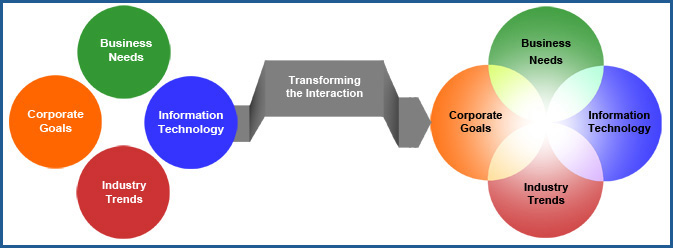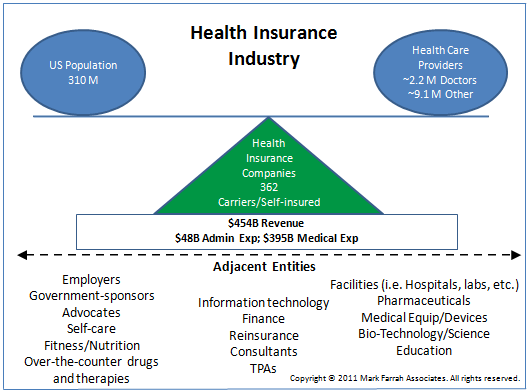Applications Of Data Analytics In Healthcare & Health Insurance Industries
I split this post into 2 sections: One on Healthcare industry and the other on Health insurance industry. I wrote this blog post to synthesize my understanding of the challenges faced by these two industries and possible solutions, after reading several white papers on these topics.
#Healthcare consulting industry and its data analytics needs
Healthcare providers operate within highly specialised business processes from scheduling through to discharge. Rising costs, long revenue cycles, growing patient populations, and changing regulatory demands create very complex financial, clinical, and operational environments. The industry’s shift from a “fee for service” reimbursement system to Evidence-Based Medicine (EBM) and Pay for Performance (P4P) has changed how healthcare organizations operate. Now they not only need access to accurate information about patient medical history and diagnoses to deliver the best medical care, but also need tools to report on the organization’s performance and quality metrics.

##Typical challenges faced by the Health care organizations and proposed solutions:
###Challenge 1: Improvement in Quality of Care and Patient Care Management — Quick and accurate diagnosis can be a matter of life or death in some situations. In efforts to improve the safety and quality of patient care, reduce medical errors, and provide higher levels of transparency to comply with regulatory mandates, health care providers can use data analytics to:
###Solution 1:
- Visualise patient health history, treatments and prescriptions.
- Monitor a patient’s health and track treatments over a period of time.
- Show how electronic health records (EHR) improve quality of care.
- Perform analysis and report on clinical outcomes and EBM processes resource Planning and Operations.
###Challenge 2: Healthcare facilities experience fluctuating capacity. This can affect the availability of patient care as well as revenue opportunities. Underestimating demand for appointments and procedures can leave patients waiting, reducing satisfaction of care. Overestimating demand underutilizes clinical staff and increases costs. On the other hand, supply chain deficiencies of medical supplies and pharmaceuticals impact budgets and performance measurements. Data analytics helps medical resource planners and operational managers to:
###Solution 2:
- Align material replenishment with actual usage.
- Improve utilisation of facilities, testing rooms and equipment.
- Reduce staffing costs by matching staff schedules to patient census.
- Improve patient flow and efficiency of admissions and discharges.
###Challenge 3: Finance, Billing and Regulations — rising operational costs and changing reimbursement methods, such as P4P, increase the urgency to improve revenue cycles. To optimize cost allocation, eliminate waste, and manage complex billing and regulatory requirements, healthcare financial and accounting professionals use Data analytics to:
###Solution 3:
- Create an organization-wide view of spending and cash flow.
- Track actual vs. budget by department, physician and procedure.
- Reduce the cost of medical supplies and physician preference items.
- Ensure timely reimbursements from patients and insurance agencies.
- Track clinical and operational metrics for performance-based funding.
- Comply with HIPAA by using HL7 standards for information exchange.
#Health insurance industry and its needs
Leaders in health insurance segment need to develop competitive advantage through improved operations, reduced costs, optimal technology spending and better service delivery – all while dealing with the immediate pressures of daily survival. By focusing on delivery and cost excellence in various health insurance business processes from on-boarding new agents to member enrollment, new business underwriting(customer eligibility assessment), policy/member administration and claims processing, health insurance firms need help in developing and deploying a rapid plan that gives them an the edge they need to achieve operational excellence.

##Typical challenges faced by the Health insurance organizations and proposed solutions:
###Challenge 1: Streamlining the claims and administration processes to lower costs, improve the beneficiary experience and driving new business. Lower technology, image and workflow spends without affecting the business.
###Solution 1:
- Bring together cross-functional groups of frontline employees and experts to generate and test solutions (a Kaizen approach).
- Document process steps and waste.
- Eliminate non-value-add steps; develop standard work descriptions for value-add steps.
- Provide customers quality experience in enrolling an insurance plan as provided by various retailers (well-developed online sales) such as ebay.com or Amazon.com, in addition to cross-channel consistency (for example, between internet and telephone).
###Challenge 2: Speeding new business response times by improving customer’s experience with the agent (external or internal underwriter) without compromising underwriting discipline.
###Solution 2:
- Improve systems for management of customer, regulatory and company policy information. This system must be convenient for all involved parties.
- Train the agents on this system, together; and develop a scorecard to monitor/evaluate the quality and uniformity of the service rendered.
###Challenge 3: Effectively and quickly managing insurer consolidations through improving process, technology and people.
###Solution 3:
- Redesign office arrangement to create small cross-functional (process-oriented) clusters (cells); each claim file now has a designated spot and is returned to that location after each use.
- Address file tracking system, if it creates busy work without adding value to client.
###Challenge 4: Mitigating the complexity and cost burden of operating with increased regulatory requirements. Growing profitability in an environment of increasing cost of care and declining reimbursement.
###Solution 4:
- Help patients achieve their health goals through less expensive means, that is, reducing reliance on emergency room services, improving prevention, and better managing chronic conditions such as high blood pressure and diabetes—which can bring down the overall health care costs.
- This information on management of chronic conditions can be made available via the customers’ preferred channels such as internet, phone etc.
###Challenge 5: Improving information accuracy to subscribers, providers, and government agencies to build trust and loyalty.
###Solution 5:
- Engage the customer/providers/government agencies early using various marketing strategies.
- Support smarter decisions by customisation, that is, by providing online tools that enable estimation of the insurance cost and benefits.
###Challenge 6: Reducing revenue leakage due to uncollected co-pays, coding errors and unidentified billing opportunities.
###Solution 6:
- Eliminate wasted resources from duplication in billing systems due to the lack of an enterprise- billing platform capable of addressing the needs for multiple lines of business.
- Solve these problems with a consolidated and flexible billing calculation, invoice presentment platform and collections solution.
###Challenge 7:
Bringing the overload of improvement projects under control.
###Solution 7:
- Develop a system for better allocation of improvement resources.
- Develop stronger criteria for evaluation; projects to be scored for their potential impact vs. difficulty to complete, and the results plotted on a matrix. Projects to be categorized as regulatory, strategic, or corporate.